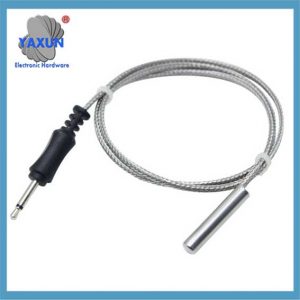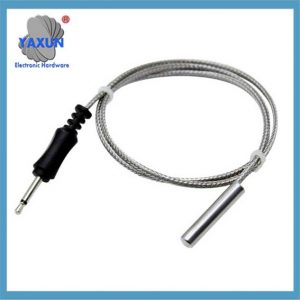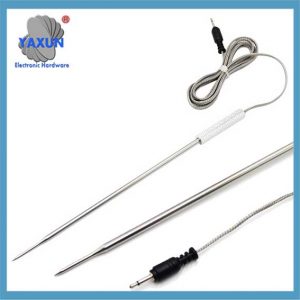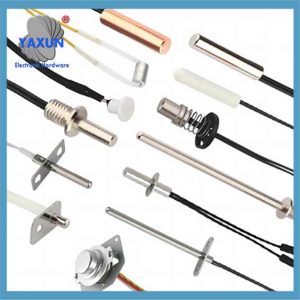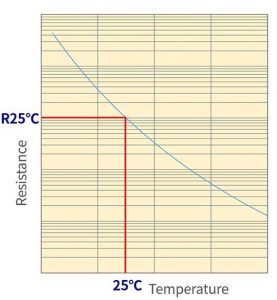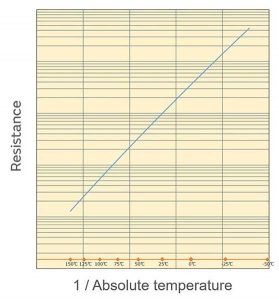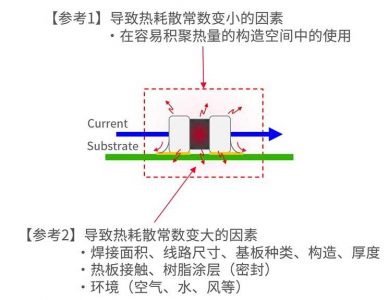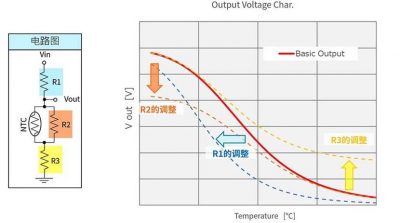产品类别
产品标签
中国定制NTC传感器探头和电缆
就像传感器一样, 它通常分为: NTC热敏电阻探头, PT100探头, PT1000探头, DS18B20探头, 水温探头, 汽车传感器探头, RTD 探头, 温控探头, 温度调节探头, 家电传感器探头, ETC.
传感器探针和电缆是传感器的包装形式, 哪个是传感器的最基本单元. 传感器通过合理的电子电路和外部包装结构包装. 它具有我们需要的一些独立的功能组件. 就像传感器一样, 它通常分为: NTC热敏电阻探头, PT100探头, PT1000探头, DS18B20探头, 水温探头, 汽车传感器探头, RTD 探头, 温控探头, 温度调节探头, 家电传感器探头, ETC.
基于温度预测及其温度测量方法的NTC探针结构, 探针包括: 多个NTC探针; 铜壳; 金属支撑结构, 电线和热导体.
步 1, 在M NTC探针中, 获得温度T0, T1, …, 通过每个NTC探针以相等的时间间隔测量的TN, 其中n表示收集的温度的序列号;
步 2, 计算在相邻温度测量时间收集的温度差VN = TNTN1;
步 3, 计算参数α= VN/VN1;
步 4, 计算预测的温度TP = TN1+VN/(1一个) 一个探针;
步 5, 计算测得的温度结核. 本发明可以进一步减少错误,并具有良好的一般适用性.
热敏电阻的完整分析!
🤔你知道什么是热敏电阻吗? 它是电子电路的小专家!
👍热敏电阻, 简单地, 是一种敏感元素,可以根据温度变化调节其电阻值.
🔥正温度系数热敏电阻 (正温度系数), 当温度升高时, 其阻力值将大大增加. 此功能使其在自动控制电路中发光!
❄️负温度系数热敏电阻 (NTC) 相反, 随着温度升高时电阻降低. 在家用电器方面, 它通常用于软启动, 自动检测和控制电路.
💡现在您对热敏电阻有更深入的了解! 在电子世界中, 这是必不可少的角色!
1. NTC简介
NTC Thermistor是一种以负温度系数的首字母缩写命名的热敏电阻. 通常, 期限 “热敏电阻” 指的是NTC热敏电阻. 它是迈克尔·法拉迪(Michael Faraday)发现的, 他当时正在研究硫化银半导体, 在 1833, 并在1930年代由塞缪尔·鲁本(Samuel Reuben)商业化. NTC Thermistor是由锰组成的氧化物半导体陶瓷 (锰), 镍 (在) 和钴 (钴).
可以在我们生活中到处看到. 由于电阻随温度升高而降低的特征, 它不仅用作温度计和空调中的温度传感设备, 或智能手机中的温度控制设备, 水壶和铁, 但也用于电源设备中的当前控制. 最近, 随着车辆电气化程度的增加, 热敏电阻越来越多地用于汽车产品.
2. 工作原理
一般来说, 金属的电阻随温度升高而增加. 这是因为热量加剧了晶格振动, 自由电子的平均移动速度相应降低.
相比之下, 由于热传导,半导体中的游离电子和孔的比例增加, 而且该部分大于速度降低的部分的比例, 因此电阻值降低.
此外, 由于频带隙存在在半导体中, 当外部加热时, 价带中的电子移动到传导带并进行电力. 换句话说, 电阻值随温度升高而降低.
3. 基本特征
3.1 电阻 - 温度特征 (R-T特征)
NTC热敏电阻的电阻值以足够低的自热状态测量 (由于施加电流而产生的热量). 标准, 建议使用最大操作电流. 和, 电阻值需要与温度成对表达.
特征曲线由以下公式描述:
罗0, R1: 温度T0处的电阻值, T1
T0, T1: 绝对温度
乙: b常数
数字 1: NTC热敏电阻的R-T特征
3.2 b常数
B常数是一个表征NTC热电阻的单个值. 调节B常数总是需要两个点. B常数描述了两个点的斜率.
如果两个点不同, B常数也将不同, 因此,在比较时请注意. (参见图 2)
数字 2: 选择的不同B常数 2 点
从这里, 可以看出,b是LNR vs的斜率. 1/T曲线:
Murata使用25°C和50°C定义B常数, 写为b (25/50).
如图 3, 1/时间 (T是绝对温度) 与电阻值的对数比例. 可以看出,这种关系接近直线.
数字 3: 温度特性为1/t作为水平轴
3.3 伏安特征 (V-I特征)
NTC热敏电阻的V-I特性如图所示 4.
数字 4: NTC热敏电阻的V-I特征
在低电流的区域, 随着电流的逐渐增加,欧姆接触的电压逐渐增加. 由电流流动引起的自加热不会导致电阻的温度通过从热敏电阻和其他部位的表面散发热量来升高.
然而, 当热量发电大, 热敏电阻本身的温度上升,电阻值降低. 在这样的领域, 电流和电压之间的比例关系不再存在.
一般来说, 热敏电阻在尽可能低的区域中使用. 标准, 建议将操作电流保持在最大工作电流以下.
如果在超过电压峰的区域中使用, 可能会发生热失控反应,例如反复加热和降低电阻, 导致热敏电阻变红或破裂. 请避免在此范围内使用它.
3.4 电阻的温度系数 (一个)
NTC热敏电阻的每单位温度变化速率是温度系数, 由以下公式计算.
例子: 当温度接近50°C并且B常数为3380K
a = -3380/(273.15 + 50)²× 100 [%/℃] = -3.2 [%/℃]
所以, 电阻的温度系数如下.
a = -b/t²× 100 [%/℃]
3.5 热耗散常数 (d)
当环境温度为T1时, 当热敏电阻消耗电力P时 (兆瓦) and its temperature changes to T2, the following formula holds.
P = δ (T2 − T1)
δ is the thermal dissipation constant (mW/°C). The above formula is transformed as follows.
δ = P/ (T2 − T1)
The thermal dissipation constant δ refers to the power required to increase the temperature by 1°C under self-heating conditions.
The thermal dissipation constant δ is determined by the balance between “self-heating due to power consumption” 和 “heat dissipation”, and therefore varies significantly depending on the thermistor’s operating environment.
Murata defined the concept of “thermal dissipation constant per unit element”.
3.6 热时间常数 (τ)
When a thermistor maintained at temperature T0 is suddenly changed to ambient temperature T1, 更改为目标温度T1所需的时间称为热时间常数 (τ). 通常, 此值是指达到的时间 63.2% T0和T1之间的温度差.
当热敏电阻保持在一个温度下 (T0) 暴露于另一个温度 (T1), 温度呈指数变化, 和温度 (时间) 时间过后 (t) 表示如下.
T= (T1 -T0) (1 - exp (-t/t) ) + T0
取t =τ,
T= (T1 -T0) (1-1/e) + T0
(t -t0)/(T1 -T0) = 1 - 1/e = 0.632
这就是为什么将τ指定为到达的时间 63.2% 温度差.
数字 6: NTC热敏电阻的热时间常数
3.7 最大电压 (最大电压)
可以直接应用于热敏电阻的最大电压. 当施加电压超过最大电压时, 产品性能会恶化甚至破坏.
此外, 组件的温度由于自热而升高. 有必要注意组件的温度不超过工作温度范围.
数字 7: NCU15类型的最大电压降低
3.8 Maximum operating current (Iop), maximum operating voltage (Vop)
Murata将最大工作电流和最大工作电压定义为当应用于0.1℃时的电流和电压. 关于此值, 热敏电阻可以实现更准确的温度测量.
所以, 应用超过最大工作电流/电压的电流/电压不会导致热电阻性能降解. 然而, 请注意,组件的自加热会导致检测错误.
Murata如何计算最大工作电流
计算最大工作电流时, 热耗散常数 (1mW/°C) 需要由单位组件定义. 热耗散常数表示散热的程度, 但是散热状态因工作环境而变化很大.
工作环境包括材料, 厚度, 结构, 焊接区域尺寸, 热板触点, 树脂包装, ETC. 底物. 单位组件定义的使用消除了环境干扰因素.
根据经验, 实际使用中的热耗散常数是 3 到 4 乘以单位组件的时间. 假设实际的热耗散常数为 3.5 次, 最大工作电流显示在图中的蓝色曲线中. 与1MW/°C的情况相比, 现在 1.9 次 (√3.5次).
3.9 零负载电阻值
电流以电流测量的电阻值 (电压) 自我加热可以忽略的地方. 标准, 建议使用最大操作电流.
数字 9: Murata的阻力值测量方法
4. 如何使用
4.1 电路图
输出电压可能会根据NTC热敏电阻接线图而有所不同. 您可以在Murata官方网站上的以下URL上模拟它.
Simsurfing: NTC热敏电阻模拟器 (Murata.co.jp)
数字 10 电阻接地和热电阻接地电路的输出特性
4.2 调整R1 (电压分隔器电阻), R2 (平行电阻), R3 (串联电阻器)
输出电压可能会根据电路图而有所不同.
数字 11 调整R值和输出特性的变化
4.3 使用Murata的官方工具计算检测错误
选择NTC热电阻的相关参数和电压分隔电路的相关参数 (参考电压和电压分隔电阻器, 阻力准确性), 然后可以正常生成温度检测的误差曲线, 如下图所示:
数字 12 使用官方工具生成温度检测误差曲线
联系我们
等待您的电子邮件, 我们将在短时间内回复您 12 小时提供您需要的有价值的信息.
 English
English Afrikaans
Afrikaans العربية
العربية বাংলা
বাংলা bosanski jezik
bosanski jezik Български
Български Català
Català 粤语
粤语 中文(简体)
中文(简体) 中文(漢字)
中文(漢字) Hrvatski
Hrvatski Čeština
Čeština Nederlands
Nederlands Eesti keel
Eesti keel Suomi
Suomi Français
Français Deutsch
Deutsch Ελληνικά
Ελληνικά हिन्दी; हिंदी
हिन्दी; हिंदी Magyar
Magyar Bahasa Indonesia
Bahasa Indonesia Italiano
Italiano 日本語
日本語 한국어
한국어 Latviešu valoda
Latviešu valoda Lietuvių kalba
Lietuvių kalba македонски јазик
македонски јазик Bahasa Melayu
Bahasa Melayu Norsk
Norsk پارسی
پارسی Polski
Polski Português
Português Română
Română Русский
Русский Cрпски језик
Cрпски језик Slovenčina
Slovenčina Slovenščina
Slovenščina Español
Español Svenska
Svenska ภาษาไทย
ภาษาไทย Türkçe
Türkçe Українська
Українська اردو
اردو Tiếng Việt
Tiếng Việt







